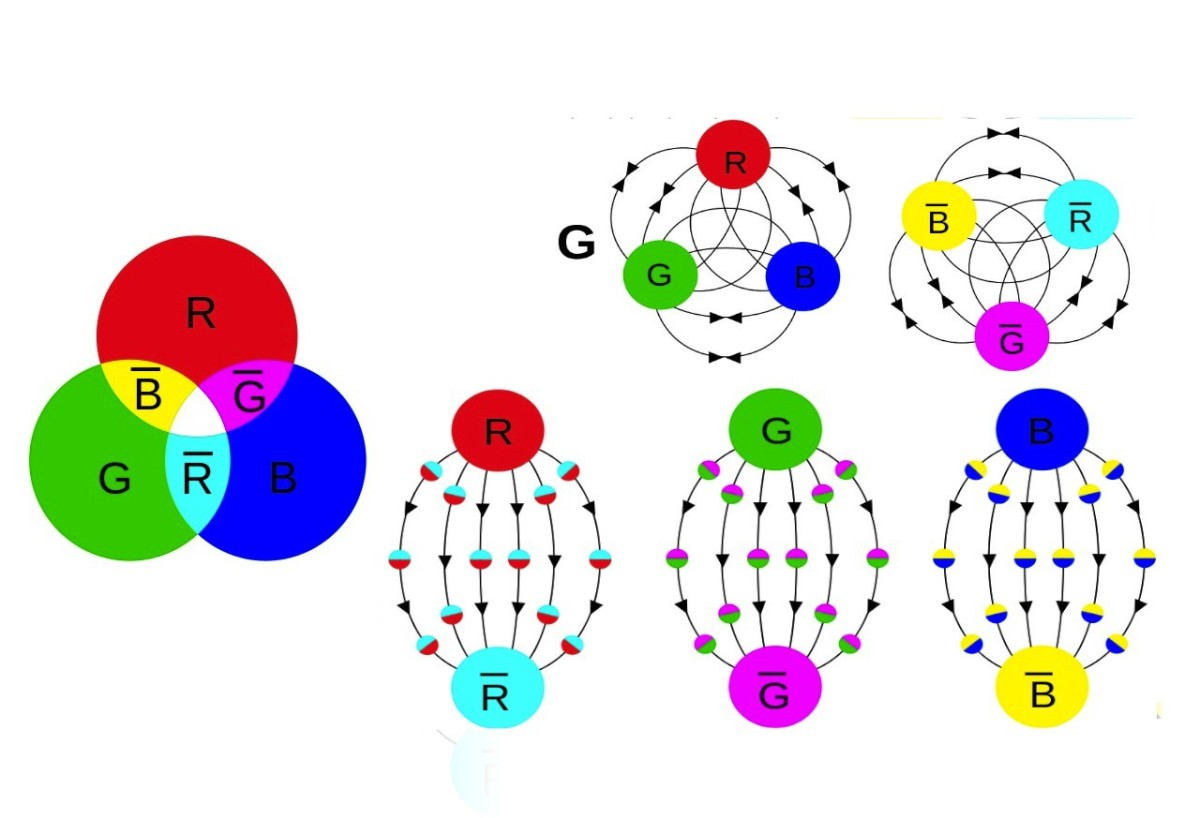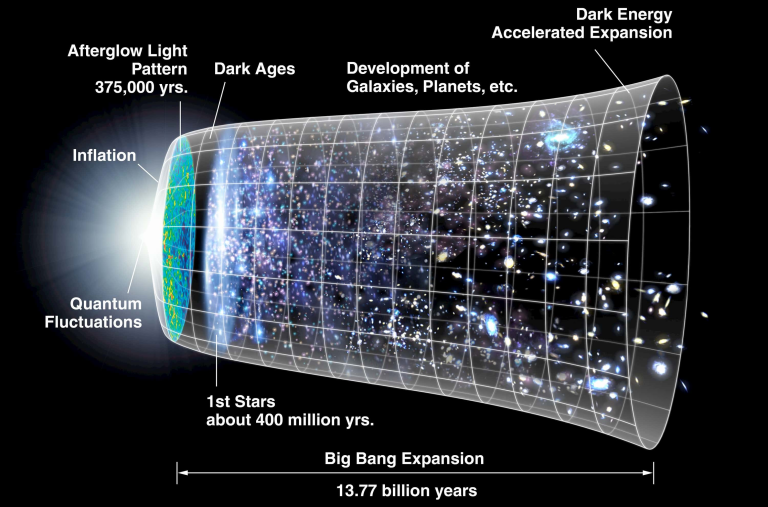Axions represent a tantalizing component of particle physics, theorized to be a key element in unraveling the mysteries of dark matter. As an elusive quasiparticle, axions are proposed to constitute a large fraction of the universe’s mass, yet they remain undetected in particle interactions. Recent advancements in quasiparticle detection techniques have sparked renewed interest in these hypothetical particles, leading researchers to explore their potential roles in the universe’s composition. A groundbreaking experiment has illuminated the path towards confirming the existence of axions and their fascinating connection to quantum materials. By bridging the gap between fundamental physics and emerging quantum technologies, the study of axions not only enhances our understanding of dark matter but also paves the way for innovative scientific breakthroughs.
In the realm of fundamental particles, the exploration of hypothetical axionic solutions offers profound insights into the unobservable components of the cosmos. Often regarded as potential signatures of dark matter, these theoretical particles, known for their unique Cold Dark Matter characteristics, spark a great deal of interest among physicists. The intricate dance of axion-like quasiparticles within innovative quantum materials could lead to revolutionary advancements in detection methodologies. As researchers delve deeper into the properties and behaviors of these elusive entities, the quest for a deeper understanding of the universe continues to evolve. Highlighting the interdisciplinary nature of modern physics, the pursuit of axions embodies the intricate relationship between particle theory and quantum exploration.
Understanding Axions: The Key to Dark Matter?
Axions are theoretical particles that scientists believe could make up the elusive dark matter which constitutes about 85% of the universe’s mass. Their existence was first suggested as part of a solution to the strong CP problem in quantum chromodynamics and is now central to contemporary cosmological models. In recent years, extensive research has been conducted to explore various properties of axions and their potential role in explaining the mysteries of dark matter. By investigating axions, physicists hope to uncover insights that could challenge or refine existing models of particle physics and the universe as a whole.
Current efforts, such as the groundbreaking work by researchers at Harvard and King’s College London, focus on the detection of axion quasiparticles. These are simulated particles that act similarly to axions and can provide a pathway for detecting the actual dark matter axions. The experiments imply that if dark matter axions exist, they would interact with specific materials to produce observable effects, offering astronomers and physicists a chance to test the most profound theories of existence and composition in the universe.
The Role of Quasiparticles in Axion Detection
Quasiparticles are excitations that emerge in many-body systems and can mimic the behavior of particles in quantum materials. In the context of axions, quasiparticle detection is pivotal. The recent research delves into how axion quasiparticles can serve as a platform for establishing the presence of dark matter axions. The use of manganese bismuth telluride, known for its unique electronic and magnetic properties, has allowed scientists to create a 2D crystal structure that nurtures these quasiparticles.
By engineering materials that exhibit these quasiparticles, the research team could utilize ultrafast laser optics to observe their dynamics. When a theoretical axion interacts with this material, it generates a detectable response, allowing researchers to confirm the interaction, thereby indirectly validating the existence of dark matter axions. This cutting-edge work not only advances the field of particle physics but also contributes to potential applications in quantum technologies and material sciences.
Innovations in Quantum Materials
Quantum materials like manganese bismuth telluride represent the forefront of materials science, combining unique properties that make them ideal for experimental setups aimed at dark matter detection. These materials, often sensitive to environmental conditions, demand advanced fabrication techniques to minimize defects while optimizing their functional properties. The ongoing work to develop these quantum materials underscores the relationship between condensed-matter physics and high-energy particle physics, showcasing how exploratory research in material science can catalyze breakthroughs in fundamental physics.
The synthesis of quantum materials has implications that stretch beyond dark matter research; they can lead to advancements in quantum computing, sensor technology, and much more. By elucidating the properties of axion quasiparticles, researchers are essentially piecing together a puzzle that could have far-reaching consequences not only for our understanding of dark matter but also for the development of next-generation technologies in multiple scientific disciplines.
Future Prospects in Dark Matter Research
The quest for confirming the existence of axions hinges on the synergy of various scientific disciplines, marking a transformative era in dark matter research. As the recent studies demonstrate, researchers are now equipped with sophisticated experimental tools that provide unprecedented access to the properties and behaviors of axion quasiparticles. The outcome of these investigations may revolutionize our understanding of the universe, potentially clarifying how dark matter influences cosmic evolution and structure.
Looking into the future, continued research on axion dark matter is expected to yield results that will enhance or reshape current theoretical frameworks in particle physics. The interdisciplinary approach adopted by researchers not only fosters collaboration but also encourages the blending of ideas from different realms, which is essential for addressing one of science’s most enduring mysteries. The anticipation surrounding potential findings signifies a compelling era for physicists dedicated to uncovering the complexities of our universe.
The Interdisciplinary Nature of Axion Research
The exploration of axion particles and dark matter exemplifies the convergence of diverse scientific fields, including condensed-matter physics, material chemistry, and high-energy physics. This interdisciplinary approach enables researchers to pool their expertise for addressing monumental questions that extend beyond individual disciplines. As axions become central to emerging theories, the integration of various scientific methodologies becomes increasingly productive, allowing for innovative solutions to longstanding challenges in particle physics.
Scientists like Suyang Xu and Jian-Xiang Qiu highlight the benefits of collaboration among teams from leading institutions. These arrangements not only enhance the research’s overall quality but also bolster the potential for groundbreaking discoveries in fundamental physics. As researchers continue pushing the boundaries of what materials, such as quantum crystals, can achieve, the foundation is laid for exciting advancements in understanding dark matter and the nature of our universe.
The Importance of Experimental Precision
In experiments targeting axion detection, it is crucial to maintain operational precision and control over experimental conditions. The intricate nature of quantum materials, combined with the delicate processes of synthesizing and testing new compounds, demand meticulous methodologies to ensure reliable and reproducible results. The innovation of tools that can capture the movements of axion quasiparticles provides researchers with a clearer lens for analyzing the scattered interactions, enhancing their capability to validate theoretical models.
As past attempts to locate dark matter have faced challenges, the thoroughness of the current investigation represents a significant advancement in experimental design. Ensuring that parameters remain controlled not only increases the likelihood of detecting axions but also helps in understanding the broader implications of these particles within the universe’s framework. This precision will be pivotal for upcoming experiments aiming to confirm the hypothesized existence of dark matter and refine the theories surrounding particle physics.
Challenges in Detecting Dark Matter
Detecting dark matter remains one of the most significant challenges facing the field of particle physics today. Axions, while promising candidates, possess traits that complicate their identification. Since they interact very weakly with ordinary matter, confirming their existence requires sophisticated detection methods and highly sensitive instruments. This intricacy has made the quest for understanding dark matter comparable to looking for a needle in a haystack.
However, with advancements in technology and a deeper understanding of quantum materials, researchers are increasingly optimistic about their prospects. The detection strategies utilizing axion quasiparticles open up new avenues for experimental inquiry, thus revitalizing hopes of locating dark matter. As scientists refine their techniques to filter out background noise and enhance signal detection, the dream of directly observing dark matter axions might soon become a reality.
Potential Applications of Axion Research
The implications of advancing research on axions extend far beyond addressing questions of dark matter. Innovations stemming from quantum materials and axion quasiparticle research could pave the way for developing new technologies, including advanced sensors and quantum computing applications. By harnessing the distinct properties of axion quasiparticles, researchers may unlock novel methods for manipulating light and matter, leading to transformative advances in optics and material sciences.
Moreover, these scientific breakthroughs could significantly impact various industries, enhancing capabilities in data transmission, imaging, and information processing. The interdisciplinary nature of this research means that findings could result in unforeseen applications, demonstrating the interconnectivity of fundamental research and practical technology. As the understanding of axions grows, so do the potential applications that could arise from their study, offering both excitement and optimism for future technological developments.
Significance of Collaborative Research in Physics
The quest to uncover the mysteries of axions and dark matter illustrates the importance of collaboration within the scientific community. Interdisciplinary teamwork accelerates the pace of discovery, building on the collective knowledge of various fields. Each participating researcher brings unique insights and skills that are essential to tackling complex scientific questions, particularly those involved in understanding the underpinnings of particle physics and cosmology.
As evidenced by the collaborative projects between institutions like Harvard and King’s College London, pooling resources encourages innovation, as researchers can share state-of-the-art technologies and methodologies. This synergy not only enhances experimental outcomes but also engenders a thriving academic environment where groundbreaking ideas can flourish, furthering humanity’s understanding of the universe.
Frequently Asked Questions
What are axions and their significance in the study of dark matter?
Axions are hypothetical elementary particles that have been proposed as a solution to the dark matter puzzle in particle physics. They are believed to make up a substantial portion of dark matter, the mysterious substance that accounts for around 85% of the universe’s mass. Understanding axions could provide profound insights into the composition and evolution of the universe.
How are axion quasiparticles used in dark matter detection?
Axion quasiparticles are simulations of axion particles that researchers can utilize to detect actual dark matter axions. When a dark matter axion interacts with a material engineered to host these quasiparticles, it can excite them, revealing the presence of dark matter through measurable reactions. This innovative detection method is at the forefront of current particle physics research.
What role do quantum materials play in the search for axions?
Quantum materials, like manganese bismuth telluride, are crucial in the search for axions as they provide a suitable platform for creating axion quasiparticles. The unique electronic and magnetic properties of these materials allow researchers to tune their characteristics to enhance the detection of dark matter signals, thus bridging the gap between theoretical particle physics and practical experimentation.
What technological advances have been made in researching axions?
Recent advancements in ultrafast laser optics and nano-fabrication techniques have enabled researchers to precisely control the conditions for axion quasiparticle experiments. These innovations allow scientists to visualize the dynamics of quasiparticles and improve the accuracy of detecting faint signals emitted by potential dark matter axions.
What are the predictions for the detection of axions in future experiments?
Researchers predict that with the continued refinement of experimental techniques and conditions, including tuning into specific radio frequencies emitted by axion particles, the detection of axions could be achieved within the next 15 years. This would represent a significant breakthrough in understanding dark matter and its implications for the universe.
Why are axions considered a viable candidate for dark matter?
Axions are considered a viable candidate for dark matter due to their theoretical properties that align well with the characteristics needed to explain dark matter’s elusive nature. Their light mass and weak interaction with other matter make them difficult to detect, but their existence could account for the gravitational effects observed in galaxies, providing a compelling link in particle physics.
How do axions affect the fundamental equations of physics?
Axions enhance the fundamental equations of physics by providing a solution to the strong CP problem in quantum chromodynamics, and they can also harmonize with the theories surrounding dark matter. Their theoretical inclusion helps physicists understand the symmetry and interactions that govern the universe, enriching the framework of particle physics.
| Key Points | Details |
|---|---|
| Existence of Axions | Axions are theorized particles that might explain dark matter and fundamental questions in particle physics. |
| Recent Research | A team from Harvard and King’s College London made progress in detecting axions using quasiparticles. |
| Quasiparticles | Axion quasiparticles simulate the actual axions and can serve as detectors for dark matter. |
| Material Used | Manganese bismuth telluride was chosen for its unique properties, crucial for crafting axion quasiparticles. |
| Experimental Techniques | Ultrafast laser optics and sophisticated measurement tools were used to visualize quasiparticle dynamics. |
| Future Directions | Further exploration of axion quasiparticles to enhance detection methods for dark matter is planned. |
Summary
Axions are a key focus in modern physics as researchers seek to unlock the mysteries surrounding dark matter. Recent advancements in axion research have propelled our understanding of these hypothetical particles, promising insights into the fabric of our universe. Through innovative experiments involving quasiparticles, scientists have taken significant strides toward confirming axions’ existence and their role in characterizing dark matter. As this field progresses, the potential applications of axions may transform our technological landscape and deepen our grasp on cosmic phenomena.





